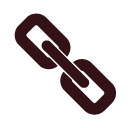Product Spotlight: Why PracticeMaster is Better Than Outlook
June 2016 Tags: Calendar Plan Template, Conflict of Interest, Outlook Integration, PracticeMaster
Microsoft® Outlook® can help manage your e-mail, your contacts, and your calendar records, but PracticeMaster manages your entire practice – for your entire firm.
PracticeMaster provides more complete client information – Outlook provides contact fields for personal information, but PracticeMaster automatically provides client and contact fields pertinent to the needs of a law firm, such as opposing attorney, judge, jurisdiction information, and more. Furthermore, PracticeMaster is easily customizable while customizing Outlook can be expensive.
PracticeMaster maintains complete matter information – Outlook provides client, contact, and calendar organization. PracticeMaster provides all this, plus more. All matter information can be saved in PracticeMaster. Save client and research notes, manage your firm’s documents, add fees and costs, and more. Use the Outlook Toolbar plug-in to journal e-mails and attachments to PracticeMaster to complete your case management.
PracticeMaster users can have access to all client and matter information – Outlook requires Microsoft Exchange to share users’ contacts and calendars. Not so with PracticeMaster. Not only are clients, contacts, and calendars available to all users in PracticeMaster, but all matter information can be quickly and easily accessed by those who need it now, including e-mails and attachments that have been journaled by any user.
Clients can optionally be marked as secure so that only the assigned users can access their information. If a user does not have access to a secure client, the client does not appear on any reports that the user runs, and that user cannot add or access records that are associated with the client.
PracticeMaster provides conflict searching for all files – When searching in Outlook, only information on your computer is found. Once all case information is saved to PracticeMaster, use the Conflict of Interest Search to find anything in any file in PracticeMaster and find it fast. Search for words, phrases, partial words, and even phonetically. Clients, contacts, calendar records, linked documents, journaled e-mails, attachments, and all other files for all users can be searched from one window to provide a comprehensive list of hits.
PracticeMaster converts activities into fees – Outlook e-mails can be added to PracticeMaster as records as well as be used to create journals, calendar records, and fees. This provides the ability to easily bill your client for appointments and other events, as well as time spent on e-mails, research, and more.
PracticeMaster provides automation – Recurring entries can be created in Outlook; however, not only can you create recurring entries in PracticeMaster, but PracticeMaster can also automatically create a series of appointments and tasks that you can reuse over and over via the Calendar Plan Templates program. When generating a Calendar Plan from a Calendar Plan Template, a plan name and a start date must be specified. This date is then used to calculate the dates for dependent events and tasks. Once the Calendar Plan is generated, the Calendar Plan can either be accepted or rejected in its entirety. If accepted, all of the generated calendar records will be added to the Calendar file. With calendar plans, if a beginning date gets changed, all dependent events and tasks can automatically be adjusted. For example, if the date of a trial is rescheduled, all dependent items can optionally be rescheduled at one time.
Outlook and Word can integrate through “mail merge” functionality, which uses standard fields in Outlook to create a letter. However, PracticeMaster’s Word Document Assembly has the ability to create documents based on any field in PracticeMaster, including non-standard fields that you have added. Specially coded document templates in Word can be used to merge information from your PracticeMaster data files to create draft documents. If the information required is not in the data files, document assembly will pause allowing you to enter the required information. This information is then saved to the document and written to the PracticeMaster data files.
PracticeMaster also provides the ability to set up WorkFlows. WorkFlows are macros that help you automate common tasks. WorkFlows allow you to automatically start tasks on demand or when certain events occur in PracticeMaster. For example, you might use a WorkFlow to create a new Calendar record based on changes made in the Client file, or to have a new fee agreement created using Document Assembly when creating a new Client record.
Tabs3 Connect provides access to complete case information away from the office – You can access Outlook on your Smartphone or other device while away from the office, but you can’t access all of your client’s files. Tabs3 Connect, a Platinum feature, lets you securely view all client, contact, and matter information on the go. You can even add fees and costs when you need to, instead of making a note to add them later.
If you’ve been thinking you don’t need PracticeMaster because you have Outlook, take another look. Thousands of law firms use PracticeMaster and Outlook side-by-side and reap the many, many benefits of using both software products at the same time.
Related posts:
Comments are closed.
Recent Comments
- Tabs3 Software on Feature Article: Year-End is Fast Approaching!
- Linda Thomas on Feature Article: Year-End is Fast Approaching!
- James Hunter on Spotlight: Reorder Fees
- Tabs3 Software on Video of the Month: PracticeMaster Conflict of Interest
- Stephanie Biehl on Video of the Month: PracticeMaster Conflict of Interest



